Obstacle course racing and training is expensive. It takes a toll on both your wallet and your body. While try to I spend as little money as possible, I do devote a lot of effort at them while trying not to get hurt. I occasionally spend a little on professional coaching, but I spend absolutely nothing on gym memberships. Ask yourself, why do you still spend serious cash on gyms where you work out on machines and throw iron?
This may come as a surprise to you but we will never, ever see one of those machines on an obstacle course. As we start a New Year, skip the crowds at the gym and start a DIY backyard OCR. Chances are you'll stick with this one.

Sometimes ya gotta start over
My gym consists of my backyard, local playgrounds, and the beautiful lakes that dot the little boro where I live. It all started after my first ever OCR at Palmerton back in 2013- If I fail an obstacle at a race, I build it in my backyard and train, vowing never to fail it again. My first obstacle was a rig.
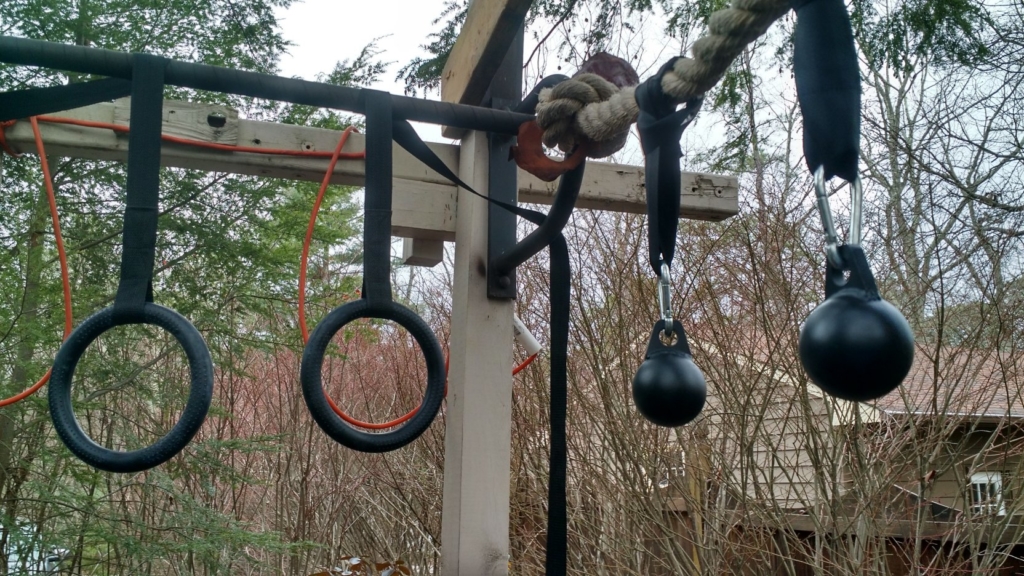
Trying to figure out a rig
I spent maybe ten bucks on this. I scavenge the wood the first weekend of August every year. My hometown holds a Canoe Carnival and teams build these massive, gorgeous floats. Then the next morning they throw everything away. I stand by at the dumpster ready to claim any and all things that will suit my obstacle building fancy. I bought all the screws, nuts, and bolts for maybe $20. The grips were mostly won in contests.

The source of my materials is out of this world
As with most DIY projects, I had some problems— the configuration was never quite right. The rig was too low and I would scrape my knees on the ground. It’s hard to build a tall rig in my backyard when the longest lumber I get is twelve feet, four feet of which needs to be sunk into the ground for stability. The best workout I’ve ever gotten on one of my rigs so far is digging those darn post holes. Plus, I have had to repair my underground sprinkler pipes a few times when I crushed them while sinking the posts. So yeah, there is that small price to pay. Thankfully, this past summer, Hubie Cushman came up with a brilliant, low-cost solution. At first I didn’t believe it was as cheap as he claimed. All steel materials. Available at Home Depot or Lowe’s. Quick and flexible set up. So my next and probably last rig will be courtesy of Cushman’s design all for less than $50.
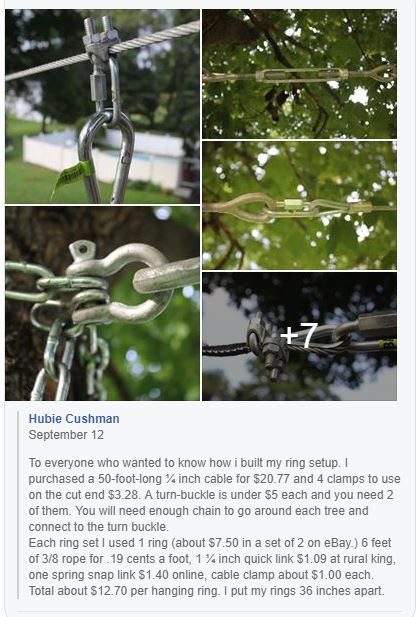
The full recipe for the last rig you'll ever build.
I finally hit paydirt when I got my hands on two gym climbing ropes that cost me just $25. As local schools around the country ditch their phys ed programs, those ropes in the gyms just hang limp. Not only was I angry that our children were deprived of this rite of passage at school, I was pissed that I failed the rope traverse obstacle on my home course (ABF Mud Run). The rope traverse was 125 feet long whereas mine maxed out at 40-feet when I tied the two together. I just had to go back and forth a lot. Anyway, since the school didn’t use them, I offered the school board $25 to take them off their hands. Now I string them between trees or playground equipment for traverse. Or I hang them from baseball backstops for climbing. I don’t fail those obstacles anymore, but I do get kinda ticked about the blisters.
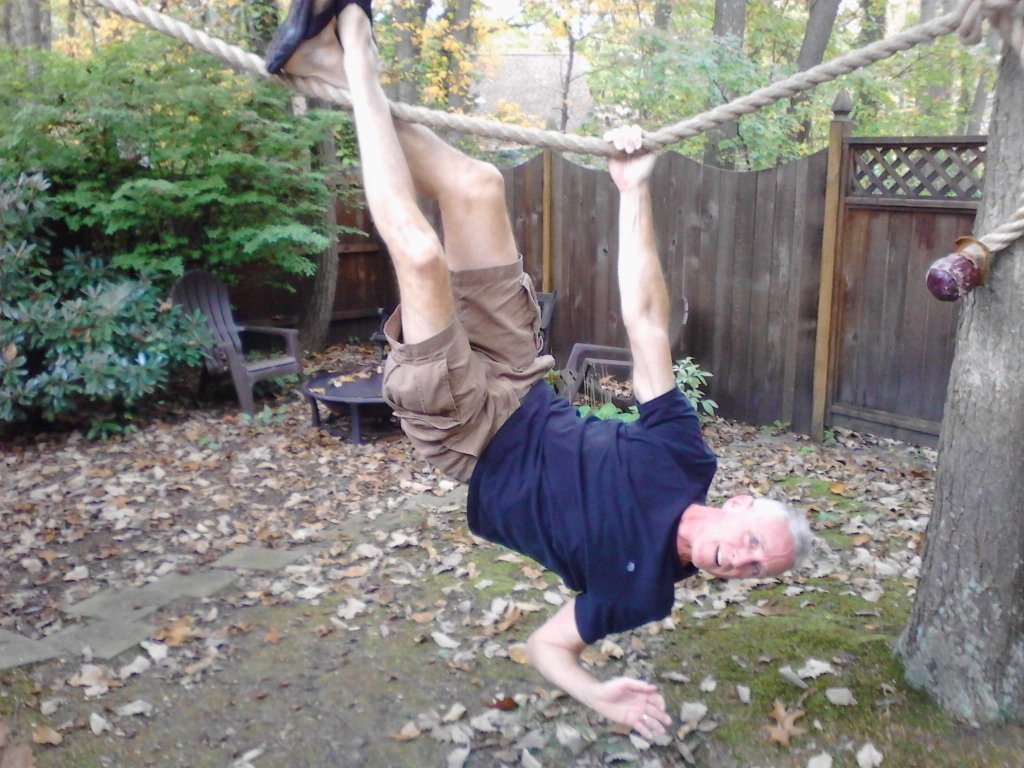
Happy to hang on 40 feet of rope.
I can’t talk about backyard obstacles and failures without mentioning the Spartan spear throw. My part of the Garden State has no lack of hay bales. I grabbed one for a dollar right after Halloween. One person's Halloween display is my Spartan target. The spear is homemade and cost me $12 in materials from Home Depot. This season I was 100% at five races. But yes, I did fail the rig again.
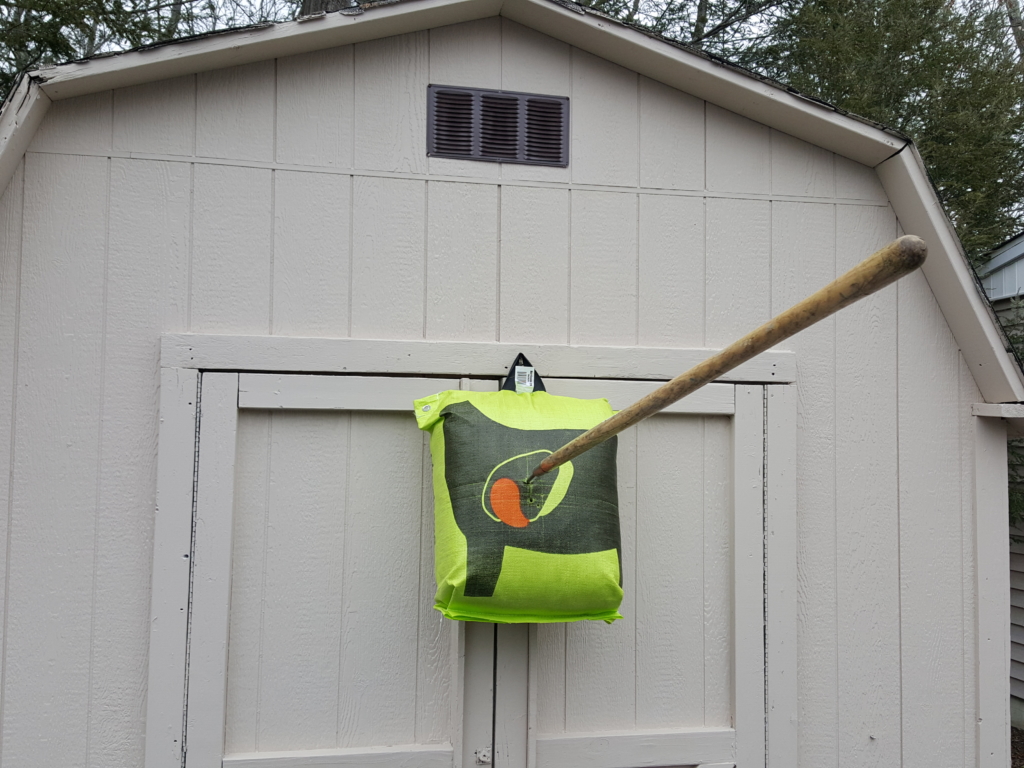
This DIY spear is a bullseye
To get back to the basics, I started with a bar. This one I snagged for free when my church was cleaning out its attic. There’s hardly an obstacle out there that doesn’t require you to be very good at bar work. Walls, ropes, ladders, Stairway to Heaven, Devil’s Playground, Bender, and so many others require you to pull your body weight up and over things. So before you go building obstacles in your backyard like me, just get a bar and become a master at various forms of pullups, chin-ups, muscle ups, dead hangs, and grips.

My very first obstacles – a bar and two plyo boxes
Not only do I use other people’s designs, but sometimes I leverage other people’s money. For my Destroyer, I wanted a dual-purpose design. Since the Destroyer was built by a climber and therefore demands a great climbing technique, I decided that my version needed to be a combo Destroyer and campus board. So for Christmas, I asked for a set of custom campus grips.
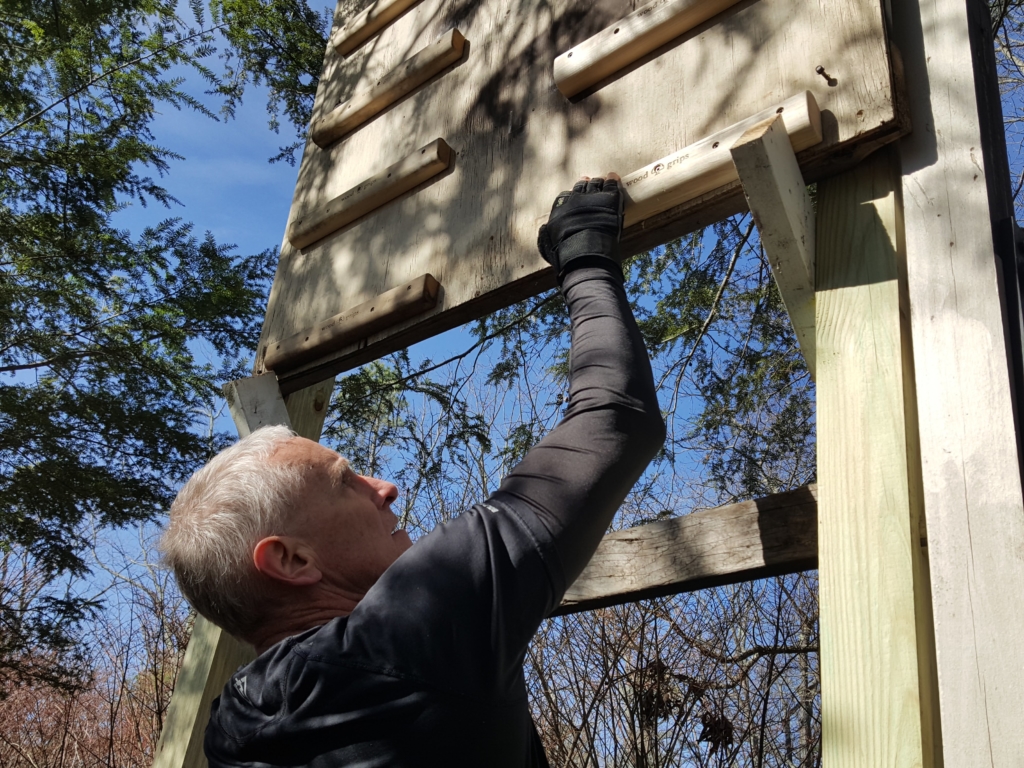
Campus wall with 1/2″ and 3/4″ grips
When something gets too easy, dial up the intensity. Get angry. Remember why you started this thing. Creativity is free and so are the many resources at your disposal where you can find out new and different ways to evolve your technique. Just be careful who you pay attention to. There’s a lot of crap out there filled with bad advice, bad form, and bad come-ons to take your money. I tend to follow the elite athletes. They are pretty good about broadcasting their secrets on social media. The Yancy Camp 10/100 was one of my favorites this year. The cost to me was $0. Trust in the coach was 100%. The payoff was massive gains in grip strength and obstacle success.

Next gen rig (8 feet off the ground – a real knee dragger)
The one thing we all have in common is this: we build these things to train like we race. We run on gnarly trails, train on real obstacles, and encourage others to do the same. We have friends over to share in the experience. It’s almost like the good old days of OCR when everything was raw and handmade. (And no, I’ve never had one of my obstacles collapse on me.) If you need a hand with designs and ideas, there are plenty available just by Googling “obstacle course construction plans”.


Nice article Larry, thanks for sharing. I hope we see you in June
Thank you for this! I will definitely use the advice to add to my backyard obstacles 🙂